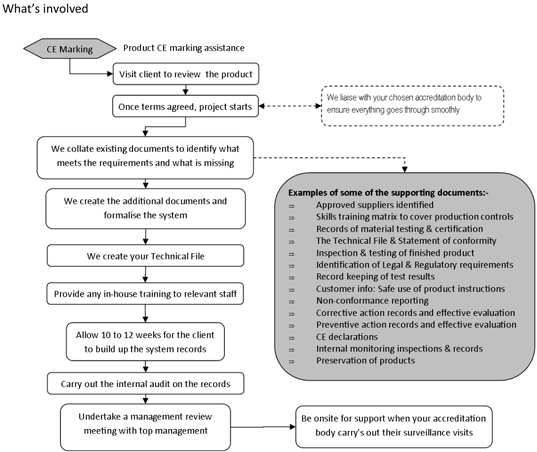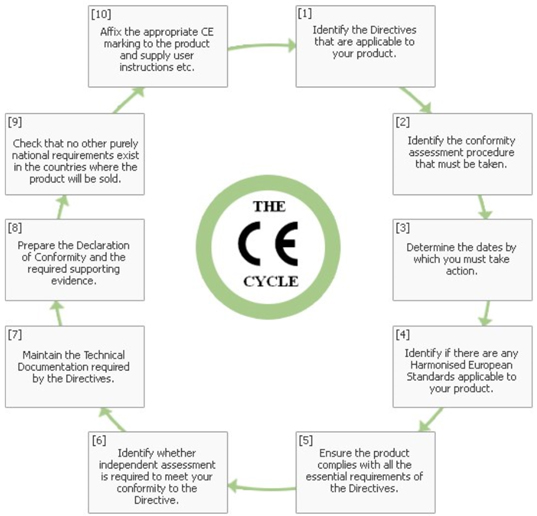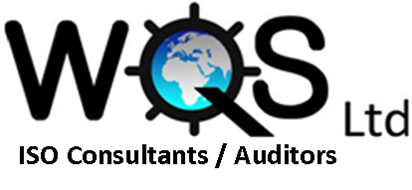CE Marking
WQS provides CE Marking consultancy for certification. CE marking on products is mandatory if the European product directive applies to the product and if it is for export to the European market. It is a criminal offence to supply products that do not satisfy the Construction Products Regulations. However once a product has CE certification a manufacturer can distribute their products freely within the European market.
Other benefits of CE marking:
- Once product design and manufacturing has complied with this one set of laws and regulations it removes the complication of compliance to multiple and conflicting regulations in different territories.
- Customers may seek out products displaying a CE marking and avoid ones that don’t.
- Safer products are available for customers therefore reducing damage claims and liability premiums.
- It is the easiest way to show compliance for fire and smoke alarms and escape doors, proof of which is required by inspectors.
Products can be self-certified or require independent testing and certification by an approved body.
CE marking is required for products regulated by the European commission’s health, safety and environmental protection legislation. If products are not included under that legalisation they will have to comply with the General Product Safety Directive 92/59/EC that applies to all other consumer products.
Types of products requiring CE marking are:
Toys, Pressure vessels, Medical devices, Personal protection equipment, Telecommunications, Pressure equipment, Non-automatic weighing Instruments, Equipment and protective systems for explosive atmospheres, Measuring instruments, In-vitro diagnostic medical devices, Electrical products, Construction products, Satellite station equipment, Machinery, Lift Machinery, Gas appliances, Appliances (other than gas), Recreational craft, Marine equipment.
Types of products NOT requiring CE marking:
Chemical, Pharmaceutical, Cosmetic, Foodstuffs.
CE marking is required if you are marketing your products to:
European Union (EU) member states:-
|
|
|
European Free Trade Association (EFTA) members
- Iceland
- Liechtenstein
- Norway
EU directives require all products to be safe and where CE marking legislation is not applicable other EU or national legislation will apply.
The CE marking process can be described in 10 steps.
Step 1: Identify the relevant directives for your product. These are available to download free of charge from the European Union website.
Step 2: Identify the conformity assessment procedure required; testing, inspection, self-declaration or quality assessment by a Notified body. If you are unsure which is applicable to your product contact us for advice.
Step 3: Timetable the actions required. Where directives are already in force your products need to conform to all relevant legislation before being exported to the EEA (European Economic Area).
Step 4: Identify if there are any Harmonised European Standards applicable to your product. It is desirable to conform to these standards. Generally conformity to them indicates conformity to the appropriate part of the directive.
Step 5: Ensure all products conform to all the essential requirements of the directives.
Step 6: Determine if assessment of your products conformity is required from a Notified Body. A CE marking can only be displayed on your products once the required certification has been received from the Notifying Body.
Step 7: Retain and maintain all Technical Documentation required by the directive.
Step 8: The Declaration of Conformity and supporting evidence (the Technical Documentation) should be completed and be available to the Competent Authorities (EU Members) upon request.
Step 9: Check there are no national standards such as labelling or packaging requirements.
Step 10: Affix the CE marking to your products and include user-operating instructions.
If any changes are made to your product or new directives are issued ensure you review your certification and take action if necessary to maintain conformity.


How to construct the CE mark
The CE marking should be affixed visibly, legibly and indelibly to the:
- product or where that is not possible to the packaging.
- accompanying documentation from either the manufactures, authorised representatives in the European community or exceptional, those responsible for placing the product on the market.
It must be at least 5mm in height unless otherwise stated. 
